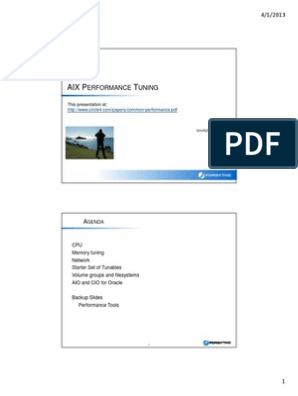100% found this document useful (3 votes)
2K views17 pagesLecture 02 Micro-Partition Overview
This doc will introduce PowerVM Micro-partition technology.
Uploaded by
zlxgoalCopyright
© Attribution Non-Commercial (BY-NC)
We take content rights seriously. If you suspect this is your content, claim it here.
Available Formats
Download as PDF, TXT or read online on Scribd
100% found this document useful (3 votes)
2K views17 pagesLecture 02 Micro-Partition Overview
This doc will introduce PowerVM Micro-partition technology.
Uploaded by
zlxgoalCopyright
© Attribution Non-Commercial (BY-NC)
We take content rights seriously. If you suspect this is your content, claim it here.
Available Formats
Download as PDF, TXT or read online on Scribd
/ 17





















































































